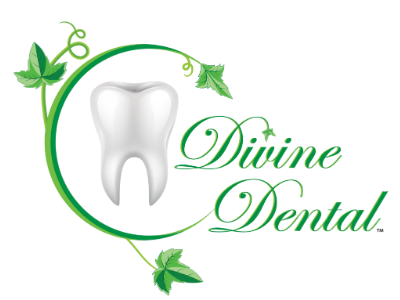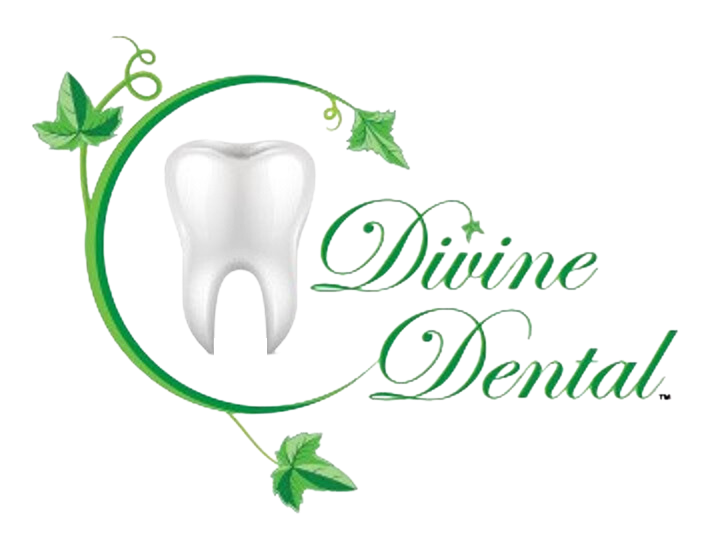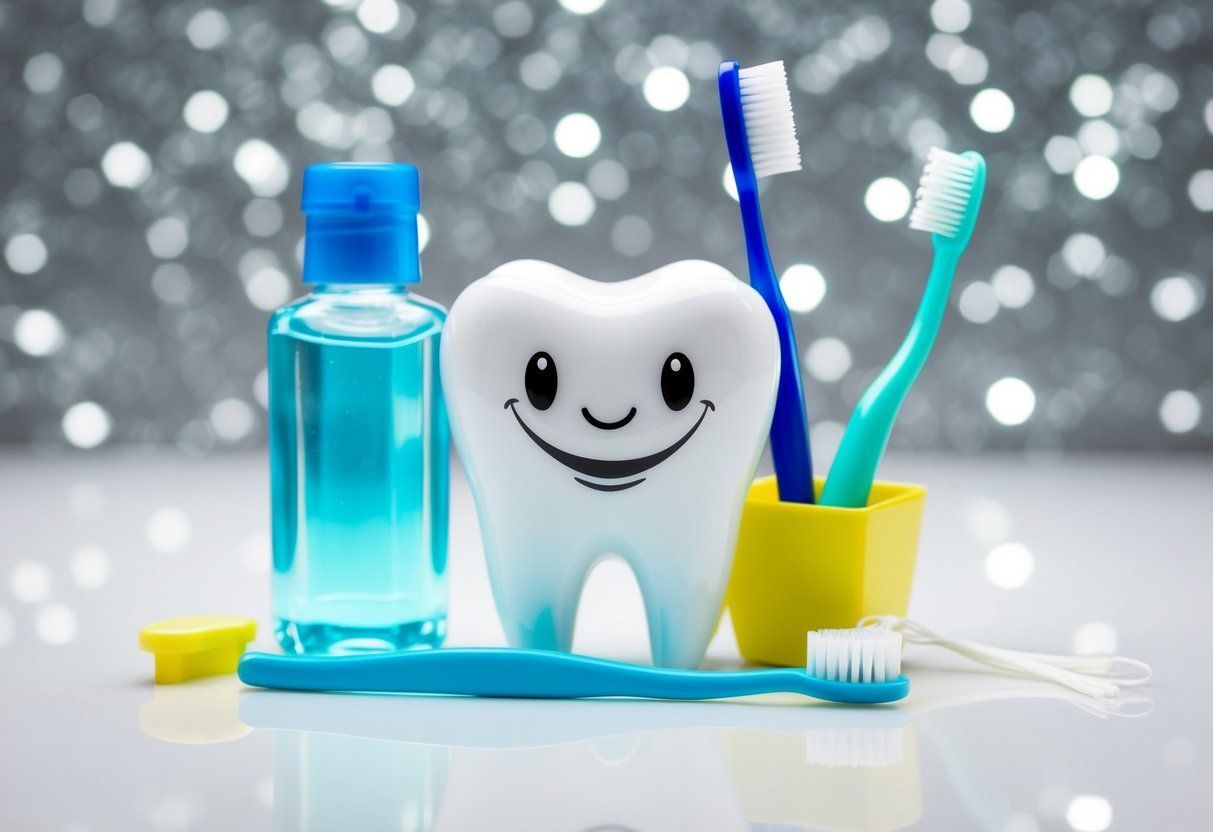The Role of Saliva in Oral Health: Essential Functions and Benefits
Saliva plays an essential role in oral health, performing various crucial functions that go beyond just keeping the mouth wet. It acts as a natural defense mechanism, protecting teeth and gums from decay and infection. This clear fluid, produced by salivary glands, helps in breaking down food, making it easier to swallow and enhancing our sense of taste.
The components of saliva include enzymes, proteins, and minerals that aid not only in protecting the mouth’s delicate tissues but also in starting the digestion process. Saliva also helps to wash away food particles and bacteria, maintaining oral hygiene and preventing bad breath. Reduced saliva flow can lead to serious oral health problems such as cavities, gum disease, and even difficulty in swallowing.
In addition to its protective and cleansing roles, saliva is important in detecting and diagnosing various health conditions. Advances in salivary diagnostics have shown promising results in identifying diseases early, enabling more effective treatments. Recognizing the significance of saliva can lead to better oral care practices and overall health.
Key Takeaways
- Saliva protects teeth and gums from decay and infection
- Reduced saliva flow can cause serious oral health issues
- Saliva helps in early detection of various health conditions
Saliva: Composition and Functions
Saliva is mostly water, making up about 98% of its composition. The remaining 2% consists of various substances essential for oral health.
Saliva contains proteins and enzymes that help break down food and protect against bacteria. Key enzymes include amylase, which starts the digestion of carbohydrates, and lipase, which begins fat digestion.
Electrolytes such as sodium, potassium, calcium, and bicarbonate are also present in saliva. These electrolytes help maintain the pH balance in the mouth and prevent tooth decay.
The physiology of salivary secretion involves several glands. Major salivary glands contributing to saliva flow are the parotid, submandibular, and sublingual glands.
Bicarbonate in saliva acts as a buffering agent. It helps neutralize acids produced by bacteria, protecting teeth from erosion.
Proteomics studies reveal many biochemical compounds in saliva, each playing a role in maintaining oral health. These compounds include mucins, which lubricate and protect the mouth.
Saliva has several functions :
- Keeps the mouth moist
- Aids in digestion by breaking down food
- Protects teeth from decay
- Helps heal wounds with growth factors
- Keeps oral tissues healthy by maintaining a balanced environment
Salivary flow varies among individuals, influenced by factors like hydration, diet, and health conditions. Consistent saliva production is vital for these functions.
Saliva also plays a role in diagnosing diseases. Tests can measure changes in its composition, providing clues to systemic illnesses.
Maintaining healthy saliva levels is essential for overall oral and systemic health. Proper hydration and good oral hygiene are key to ensuring adequate saliva production.
The Development of the Salivary Glands
Salivary glands play an essential role in oral health. They develop early in the embryonic stage from the oral ectoderm.
Stages of Development:
- Initiation: Starts as epithelial thickening.
- Bud: Epithelial cells grow into the underlying mesenchyme.
- Branching Morphogenesis: The epithelial buds branch and form ductal structures.
There are three major salivary glands:
- Parotid
- Submandibular
- Sublingual
Anatomy and Morphology
The parotid gland is the largest and located near the jaw. The submandibular gland is beneath the jaw, and the sublingual gland is under the tongue. Their structures are essential for saliva production.
Gene Expression
Specific genes regulate gland development. These genes control cell differentiation and branching. Dysregulation can lead to developmental disorders.
Cell Types
The glands contain acinar cells that produce saliva and ductal cells that transport it. Supporting cells provide structure.
Important Genes:
- FGF10
- EGF
- BMPs
Each contributes to different stages of salivary gland development.
In mice, the development patterns are similar to humans, making them useful for study. Understanding these processes helps in developing therapies for gland repair and regeneration.
Salivary Flow Rate and Oral Health
Salivary flow rate plays a critical role in oral health, affected by factors such as daily biological cycles, age, and medical conditions. These factors can influence the protection and maintenance of oral tissues.
Circadian Rhythms in Salivary Flow
Salivary flow rates fluctuate throughout the day, following circadian rhythms. Typically, the flow is highest in the late afternoon and lowest during sleep. This is important because lower flow rates at night can increase the risk for dental caries and oral infections due to reduced cleansing action of saliva.
Researchers like Becks and Wainwright noted these variations as early as the 1930s. Monitoring these rhythms helps in understanding and potentially mitigating the risk factors associated with low nighttime flow rates.
Effects of Age on Salivary Flow
Age significantly impacts salivary flow rate. Studies show that as people age, their salivary glands may become less efficient. This can lead to a condition known as xerostomia or dry mouth. Reduced saliva production in older adults can contribute to higher risks of cavities, gum disease, and fungal infections.
Older adults may also experience changes in saliva composition, affecting its protective functions. It’s important for this age group to maintain good hydration and seek medical advice if they experience dry mouth symptoms.
Impact of Medical Conditions
Several medical conditions can adversely affect salivary flow rates. Conditions such as diabetes and Sjögren’s syndrome can significantly reduce saliva production. Diabetes can impact blood flow to salivary glands, while Sjögren’s syndrome involves the immune system attacking these glands.
Dehydration is another condition that can reduce salivary flow. Ensuring proper hydration is critical for maintaining salivary function. People with these conditions may need specialized dental care to manage the risks that come with reduced salivary flow.
Understanding these factors is vital for mitigating risks associated with low salivary flow and maintaining good oral health.
Saliva’s Protective Role in the Mouth
Saliva performs several key functions in the mouth, protecting teeth and oral tissues from damage and disease. It helps maintain pH levels, forms a protective enamel pellicle , and has antimicrobial properties.
Buffer Capacity and pH Regulation
Saliva helps regulate the pH in the mouth. The pH balance is vital for preventing dental caries and maintaining oral health. When the pH drops due to dietary acids or bacterial activity, saliva’s buffer capacity neutralizes these acids.
This neutralization process helps prevent the dissolution of hydroxyapatite , the mineral component of teeth. By maintaining a neutral or slightly basic pH, saliva stops the demineralization process, protecting the teeth from decay. This buffer system is crucial in preventing dental plaque from becoming overly acidic and damaging the teeth.
Enamel Pellicle and Remineralisation
The enamel pellicle is a thin film that forms on the surface of teeth almost immediately after cleaning. It is made of selective proteins from saliva, which act to protect the enamel.
The pellicle acts as a barrier against acids that can erode enamel. Saliva promotes remineralization by supplying calcium and phosphate ions to the enamel. These minerals aid in rebuilding any areas where demineralization might have occurred. This process is important for maintaining the strength and integrity of the teeth , ensuring they remain healthy and resistant to decay.
Antimicrobial Properties and Infection Prevention
Saliva contains various proteins and enzymes that provide antimicrobial action, important in preventing oral infections and diseases. These substances include lysozymes, lactoferrin, and peroxidase, which target harmful bacteria in the mouth.
This antimicrobial action helps control bacterial populations, reducing the risk of oral infections and diseases such as gingivitis and dental caries. Saliva also helps wash away food particles and bacteria, further aiding in maintaining a clean and healthy oral environment. This natural cleansing action is key to preventing the buildup of harmful bacterial colonies and maintaining overall oral health.
Saliva in Disease Detection and Diagnosis
Saliva, a versatile and easily obtainable fluid, plays a crucial role in diagnosing various diseases. This section explores how saliva can be used to detect systemic diseases, identifies key biomarkers and salivary proteins, and discusses its efficacy as a diagnostic fluid.
Salivary Diagnostics for Systemic Diseases
Salivary diagnostics is an emerging field that leverages the easy collection of saliva to diagnose systemic diseases. Conditions such as HIV/AIDS and diabetes can be detected by examining specific components in saliva. For example, glucose levels in saliva can help in monitoring diabetes, while antibodies can indicate the presence of HIV.
Salivary diagnostics is non-invasive and cost-effective, making it a promising tool for early disease detection. Research is ongoing to identify other biomarkers in saliva that could help diagnose diseases like cancer and autoimmune disorders. With advancements in technology, salivary diagnostics could soon become a routine part of medical practice.
Biomarkers and Salivary Proteins
Biomarkers in saliva are molecules that indicate the presence or severity of a disease. Proteins such as salivary amylase, mucin, and lysozymes can reveal significant information about a person’s health. For instance, elevated levels of certain proteins might indicate inflammation or infection.
Proteomics, the large-scale study of proteins, has helped identify these biomarkers. One example is the potential use of salivary proteins to detect Sjögren’s syndrome, an autoimmune disease. By analyzing these proteins, healthcare providers can diagnose conditions earlier and more accurately, improving patient outcomes.
Saliva as a Diagnostic Fluid
Saliva is 99% water, but the remaining 1% contains vital organic and inorganic molecules useful for diagnosis. Elements like sodium, potassium, and calcium, as well as molecules like mucopolysaccharides, provide insights into oral and systemic health.
The accessibility of saliva makes it an ideal diagnostic fluid, especially for infectious diseases like COVID-19. During the pandemic, saliva tests were widely used for their accuracy and convenience. Saliva’s role as a diagnostic fluid continues to expand, offering a simple yet effective means of detecting and monitoring diseases.
These attributes make saliva a powerful tool in medical diagnostics, promising innovations in disease detection and patient care.
Influence of Medications and Therapies
Certain medications and therapies can have significant effects on saliva production and salivary gland function. These impacts may lead to conditions like dry mouth or xerostomia, which influence oral health.
Drug-Induced Xerostomia and Salivary Gland Dysfunction
Many drugs can cause dry mouth. Antihistamines , antidepressants , and other medications often reduce saliva flow. These drugs affect the nervous system, slowing signals that tell salivary glands to produce saliva.
When saliva flow is lower, the mouth becomes dry. This dryness can lead to dental problems like cavities because saliva helps protect teeth by washing away food and bacteria. Users of these medications should be aware of these side effects.
Managing xerostomia might include using saliva substitutes, drinking plenty of water, or chewing sugar-free gum.
Effects of Radiation and Chemotherapy
Radiation therapy, especially for head and neck cancers, can damage salivary glands. This damage reduces saliva production, leading to xerostomia . Patients often experience significant discomfort and dental issues.
Chemotherapy also affects saliva, although the impact may vary. Some drugs cause fewer side effects on salivary glands compared to radiation.
Management strategies for these patients include using products to moisten the mouth, and sometimes sialogogues , which stimulate saliva production. Maintaining good oral hygiene is crucial to prevent dental diseases.
Patients undergoing these treatments should consult their healthcare providers about side effects.
Saliva’s Role in Digestion and Taste
Saliva plays a critical role in both digestion and taste. When food enters the mouth, saliva begins to work immediately. As it mixes with food, it helps form a bolus , making it easier to swallow. This process ensures that swallowing is smooth and reduces the risk of choking.
Chewing activates the salivary glands, which release saliva. Saliva contains digestive enzymes like salivary amylase , which starts the breakdown of carbohydrates. This is just the beginning of the digestive process, which will continue in the stomach and intestines.
Taste is another key function of saliva. For taste buds to detect flavors, the molecules in food must dissolve in saliva first. This allows the taste receptors to sense different tastes such as sweet, salty, sour, and bitter. Without saliva, tasting food properly would be difficult.
Saliva also improves the texture and consistency of food in the mouth. By turning dry food into a soft, cohesive lump, it makes chewing and processing food more pleasant. This not only enhances chewing but also ensures better preparation of food for its journey through the esophagus.
Moreover, saliva helps clean the mouth, removing food particles and bacteria. This supports general oral health and ensures that the mouth environment remains balanced.
In summary, saliva is essential for both the initial stages of digestion and the experience of taste. It facilitates easier chewing, swallowing, and breaks down food particles, highlighting its multifaceted role in oral health.
Maintenance of Oral Hygiene and Dental Care
Saliva has several crucial functions in maintaining oral hygiene and protecting against dental diseases. It helps in preventing tooth decay, stimulates salivation through chewing gum, and supports regular oral care routines.
Saliva in Preventing Caries and Dental Diseases
Saliva plays a key role in preventing dental caries and other oral diseases. It contains enzymes and antibodies that help break down food particles and fight bacteria.
The minerals in saliva, such as calcium and phosphate, aid in the re-mineralization of tooth enamel, reducing the risk of tooth decay. Buffers in saliva neutralize acids produced by bacteria, protecting against gum disease and tooth erosion.
It’s important because a decrease in saliva flow can lead to increased susceptibility to dental caries and gum disease. Proper hydration and regular dental check-ups are essential to ensure healthy saliva production.
Chewing Gum and Saliva Stimulation
Chewing gum, especially sugar-free types, enhances saliva production. This is particularly beneficial after meals to help clear food particles and neutralize acids.
Ingredients like xylitol in sugar-free gum have an added protective effect against bacteria. Chewing stimulates the salivary glands, increasing saliva flow, which helps in washing away debris and maintaining a cleaner mouth environment.
Regularly chewing sugar-free gum can be a simple strategy to aid in oral hygiene, especially when brushing isn’t immediately possible. Always choose products with dentist recommendations to ensure safety and effectiveness.
Saliva and Oral Care Routines
Incorporating saliva-friendly practices into daily oral care routines is important. Drinking plenty of water and avoiding tobacco and alcohol can help maintain saliva flow.
Using fluoride toothpaste and mouthwashes can further aid in protecting the teeth and gums. Techniques like brushing twice a day and flossing are essential to remove plaque and prevent oral diseases.
Saliva also plays a role in the effectiveness of dental care products. For instance, fluoride in toothpaste and mouthwash reacts with minerals in saliva to strengthen tooth enamel, providing an extra layer of defense against decay. Regular visits to the dentist ensure that any issues with saliva production are addressed promptly.
Saliva’s Relationship with Other Aspects of Health
Saliva plays a crucial role in not just oral health but also has significant connections to other health aspects. It interacts closely with the oral microbiome, and its production can be influenced by nutritional factors.
Oral Microbiome and Saliva
Saliva helps control the oral microbiome by washing away food particles and harmful bacteria. It contains proteins that fight infections and enzymes that break down food.
These proteins, like lysozyme and lactoferrin, work to prevent bacterial growth. This is important in reducing the risk of oral diseases such as caries and gingivitis.
Saliva also maintains a pH balance in the mouth, creating an environment less conducive to harmful bacteria. This balance is vital for both teeth and gums, ensuring long-term oral health.
Nutritional Considerations and Salivary Function
Nutritional status can affect saliva production and quality. Adequate hydration is necessary for optimal saliva production. Without enough fluids, saliva flow decreases, leading to a dry mouth.
Certain foods can stimulate saliva production. For example, fibrous foods like fruits and vegetables can increase salivation, which aids in the mechanical cleaning of teeth.
Diet can also impact saliva’s buffering capacity, which helps neutralize acids from food and drink. This buffering is crucial for protecting tooth enamel and preventing decay.
Diabetes can reduce saliva flow, increasing the risk of oral infections. Monitoring and managing blood sugar levels can help maintain healthy saliva production and contribute to better overall oral health.
Challenges and Disorders of the Salivary Function
Salivary function is crucial for maintaining oral health. Disorders such as dry mouth and Sjogren’s syndrome can significantly impact this function, leading to various health issues. Managing these conditions often involves specific treatments and lifestyle adjustments.
Dry Mouth and Its Consequences
Dry mouth, or xerostomia, occurs when salivary glands don’t produce enough saliva. This condition can be caused by dehydration, certain medications, or diseases like diabetes.
Saliva helps neutralize acids produced by bacteria. It also aids in digestion and keeps the mouth moist. Without enough saliva, individuals can suffer from increased tooth decay, gum disease, and difficulties in speaking and swallowing.
Management of dry mouth often involves increasing fluid intake, using artificial saliva, and avoiding substances like caffeine and alcohol that can worsen dryness.
Sjogren’s Syndrome and Other Salivary Gland Diseases
Sjogren’s syndrome is an autoimmune disease where the body’s immune system attacks its own salivary glands. This leads to dry mouth and dry eyes. Other salivary gland diseases can include infections, blockages, and tumors, which can disrupt saliva production and flow.
Symptoms of Sjogren’s syndrome include a gritty or burning feeling in the eyes, difficulty swallowing, and a decreased sense of taste. Treatment focuses on relieving symptoms and may involve medications that increase saliva production or reduce inflammation.
Management and Treatment of Salivary Disorders
Treating salivary disorders often requires a mix of medical treatments and lifestyle changes. Artificial saliva products can help moisten the mouth. They come in various forms like sprays, gels, and lozenges.
For some conditions, medications that stimulate saliva production can be prescribed. For instance, pilocarpine and cevimeline are common drugs used for this purpose.
Keeping hydrated is essential, as dehydration can worsen symptoms. Regular dental check-ups and maintaining good oral hygiene can also help manage these conditions and prevent complications.
Innovative Research and Technologies in Salivary Analysis
Recent advances in salivary analysis have shed light on the importance of saliva in oral health, benefiting both diagnosis and treatment. Two key areas driving progress are salivary exosomics and transcriptomics, as well as microbiological and molecular advancements.
Salivary Exosomics and Transcriptomics
Salivary exosomics involves studying exosomes, tiny vesicles secreted in saliva containing various biomolecules. This research helps identify disease markers for conditions like oral cancer and systemic diseases. These exosomes carry proteins, lipids, and RNA, providing a non-invasive method to analyze molecular changes in the body.
Transcriptomics examines RNA molecules in saliva. This study reveals gene expression patterns that could indicate disease states or responses to treatments. For instance, specific RNA markers in saliva can signal the presence of oral cancers or other inflammatory diseases. Leveraging these technologies allows for early detection and personalized healthcare approaches.
Microbiological and Molecular Advances
Microbial analysis in saliva has revealed a diverse community of bacteria, known as the oral microbiome. Understanding these microbial populations is crucial for diagnosing conditions such as periodontitis and dental caries. Modern techniques, like next-generation sequencing, help map these microbiomes accurately.
Molecular advances include the identification of DNA, proteins, and other biomolecules in saliva. This analysis supports the development of diagnostic tools for oral and systemic diseases. Detecting specific protein markers can aid in assessing the risk of diseases like diabetes or cardiovascular conditions, making saliva a valuable diagnostic fluid.
These advancements are transforming how oral and systemic health is monitored and managed, providing essential non-invasive tools for early diagnosis and treatment planning.
Frequently Asked Questions
Saliva plays a vital role in maintaining oral hygiene, preventing dental caries, aiding digestion, and protecting the oral immune system. This section addresses common questions about saliva’s functions and how it impacts overall health.
How does saliva contribute to maintaining oral hygiene?
Saliva helps to keep the mouth moist and clean. It washes away food particles and debris, reducing bacteria in the mouth. This helps to prevent bad breath and infections.
Can an increase in saliva production be indicative of oral health issues?
An increase in saliva can indicate certain conditions such as acid reflux, pregnancy, or neuromuscular diseases like Parkinson’s. It could also be a sign of oral infections. It’s important to consult with a dentist if unusual saliva production is noticed.
What role does saliva play in the prevention of dental caries?
Saliva helps to neutralize acids produced by bacteria in the mouth. It also contains calcium and phosphate, which are essential for remineralizing teeth. These actions help to protect against the development of dental caries.
How is saliva production related to overall digestive health?
Saliva contains enzymes that begin the digestion process. It helps to break down food particles and make swallowing easier. Proper saliva production supports effective digestion and nutrient absorption.
What are the defensive properties of saliva in the oral immune system?
Saliva contains antimicrobial agents that help to combat pathogens. It forms a barrier on the oral tissues, protecting them from infections and injuries. These properties are crucial for maintaining oral health.
What measures can be taken to manage excessive saliva production?
Managing excessive saliva production can include staying hydrated, avoiding acidic foods, and using anticholinergic medications if prescribed by a doctor. Regular dental check-ups can help diagnose and address any underlying conditions contributing to hypersalivation.…
The post The Role of Saliva in Oral Health: Essential Functions and Benefits first appeared on Guardia Law Firm Llc.
Our address
Work Hours
- Mon - Thu
- -
- Friday
- -
- Sat - Sun
- Closed
All Rights Reserved | Divine Dental |
Lead Generation by LeadLane
* Some restrictions may apply to a free second opinion




